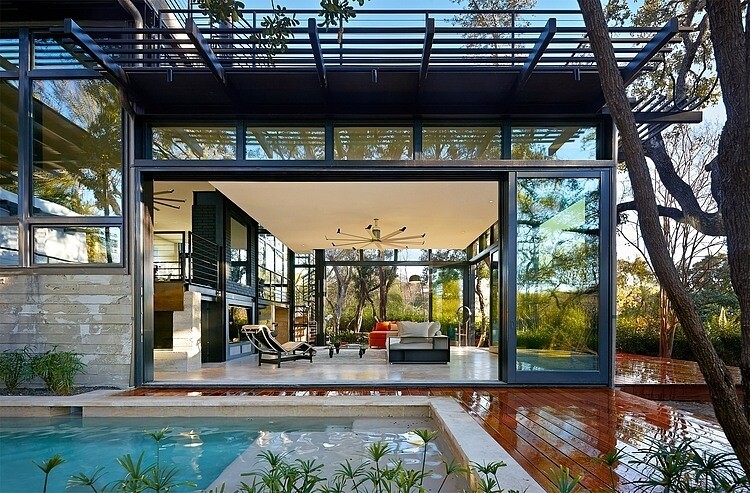Picture this: you’re hosting a backyard barbecue. The grill is sizzling, your friends are laughing on the patio, and you’re… stuck inside the kitchen, playing a lonely game of “plate shuttle” through the back door. Sounds familiar, right?
What if there was a way to be the hero of your own party, effortlessly serving up burgers and drinks without missing a single funny story? Enter the pass through window—your home’s secret weapon for seamless entertaining and a brighter, more connected living space.
What Are Pass Through Windows?
So, let’s get down to basics. What exactly are we talking about?
Pass through windows are a functional and stylish feature that connects two separate spaces, allowing easy interaction or transfer of items between them. Typically, these windows are found in kitchens, bars, and areas that blend indoor and outdoor spaces. They serve as a convenient way to pass food, drinks, or even communicate without physically moving between rooms.
These windows usually come with a sliding or folding mechanism, which makes them easy to open and close. In a kitchen, for example, a passthrough window allows you to serve meals directly to guests on the patio or communicate with someone in another room without stepping away from your cooking.
The charm of pass through windows lies in their ability to connect spaces, making them feel more open and airy. They help bring natural light into different areas and can improve airflow. These windows are often chosen for their practical benefits, like enhancing communication and accessibility, as well as their ability to make the home feel more spacious.

What Are the Benefits of Pass Through Windows?
Why should you consider adding one to your home? The benefits are pretty delicious:
Increased Accessibility
One of the biggest benefits of a passthrough window is the ease with which you can transfer items between spaces. In a kitchen, for example, it allows you to pass food directly to guests on the patio or to someone in the next room, without having to walk back and forth.
Enhanced Airflow and Light
A passthrough window helps improve ventilation by allowing fresh air to flow between spaces. It also allows natural light to enter, brightening up areas that may not have access to direct sunlight, making your home feel more open and welcoming.
Space Optimization
Passthrough windows can help maximize the use of space by making smaller rooms feel larger and more open. They eliminate the need for bulky doors or partitions, creating an efficient flow between areas.
Aesthetic Appeal
In addition to their functional benefits, passthrough windows can add a modern and sleek touch to your home’s design. They complement various architectural styles and are a subtle way to make your space feel more stylish and connected.
How Much Does a Pass Through Window Cost?
Let’s be real: when dreaming up any home improvement project, the big question is always, “Okay, but what’s the damage going to be?” When it comes to pass-through windows, there’s no one-size-fits-all price tag.
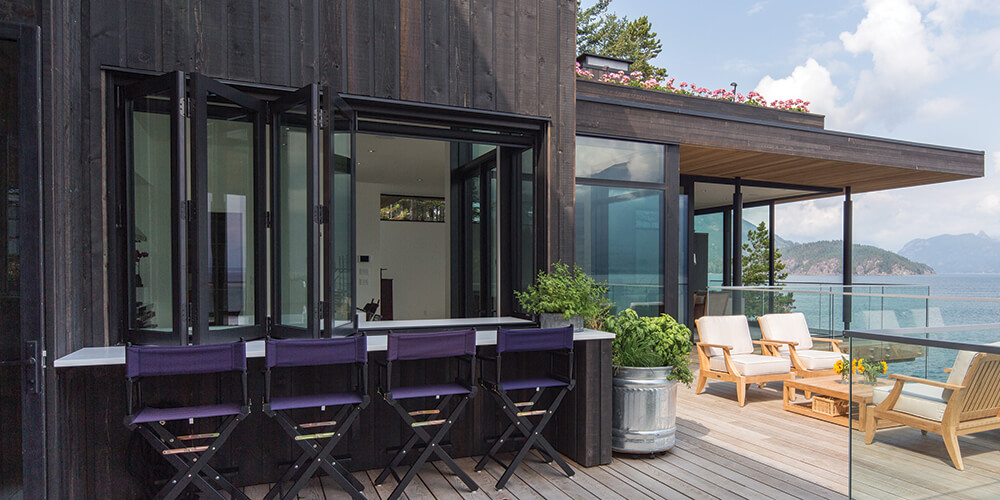
The cost of a passthrough window typically ranges from $400 to $2,000, depending on several factors like size, materials, and design. Basic models with standard materials like vinyl or wood can cost between $400 and $800. However, if you opt for custom sizes or higher-end materials, such as aluminum or fiberglass, the price can rise to $1,500 or more.
Installation costs are another key factor. On average, expect to pay $200 to $500 for professional installation, depending on the complexity of the job. If the installation requires structural changes, such as resizing an opening or adding framing, costs may go higher.
For added features, such as screens or energy-efficient glass, prices can increase by $100 to $300. Ultimately, the total cost depends on your specific choices, but getting multiple quotes from contractors can help ensure you stay within your budget.
Where Do You Use Pass Through Windows Best?
The beauty of a passthrough window is how it transforms ordinary spaces into extraordinary connections. While they shine in many spots, a few key locations truly maximize their potential for both function and fun.
By far the most popular and practical placement is connecting your kitchen to an outdoor living space like a patio, deck, or balcony. This setup is an entertainer’s dream, turning meal prep into the heart of the party. It creates the perfect serving station for barbecues, allowing you to pass food and drinks directly to guests outside without missing a moment of the conversation. It’s also ideal for keeping an eye on kids playing in the yard while you’re indoors.
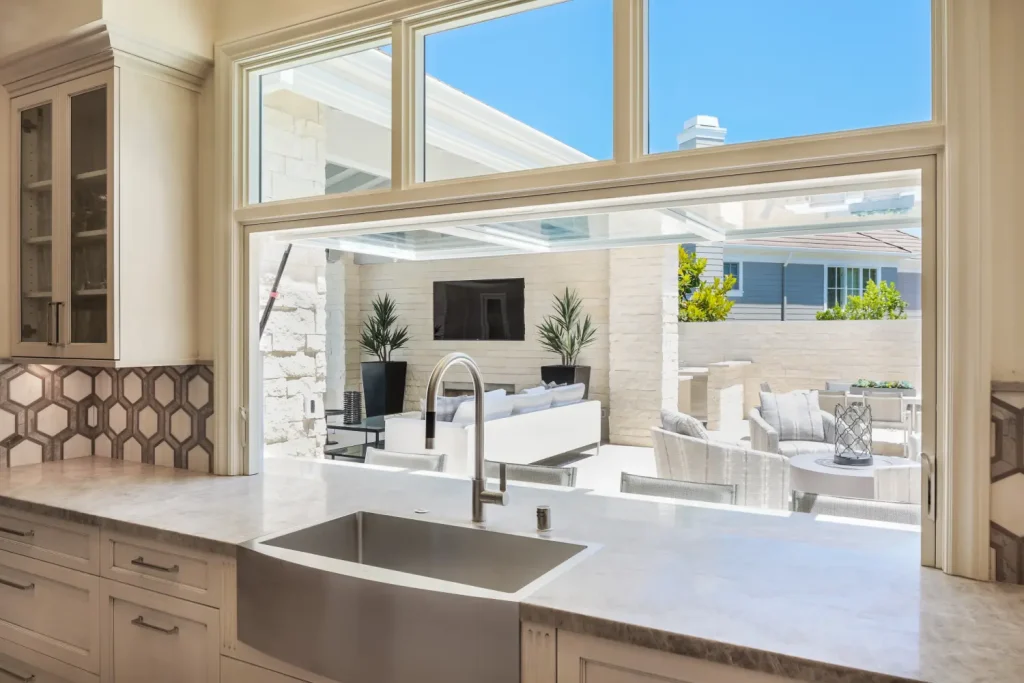
Beyond the kitchen, these windows work wonders in other areas too. A pool house or backyard bar becomes a professional-grade concession stand with a serving window. In a dining nook or sunroom, it creates a charming café-like atmosphere, perfect for enjoying morning coffee with a view. Even a garage workshop can benefit, providing easy access to pass tools and refreshments outside during projects.
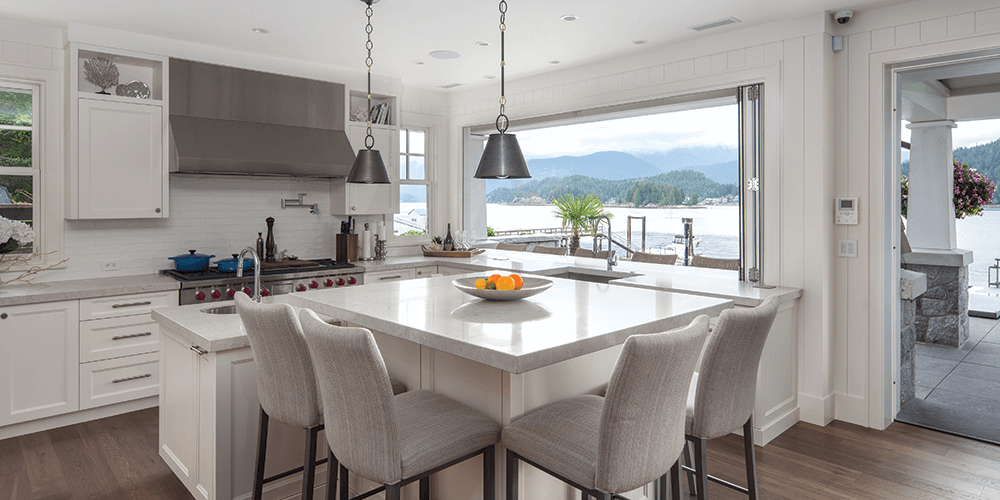
Actually, the best spot is wherever you want to erase the line between inside and out, adding a dash of convenience and a whole lot of charm to your daily routine.
Popular Pass Through Window Styles
Choosing the right passthrough window is like selecting the perfect door between your indoor and outdoor spaces. The style you pick impacts not just the look but also the functionality and feel of your home. Here are the most popular styles that work beautifully as pass-through windows.
Casement Windows
Operated by a simple crank handle, casement windows swing outward to provide a 100% clear opening – making them ideal for passing through large trays or platters. Their full unobstructed access and excellent ventilation capabilities make them a classic choice that blends seamlessly with everything from traditional to contemporary home designs. The clean lines and elegant operation are perfect for homeowners who value both form and function.
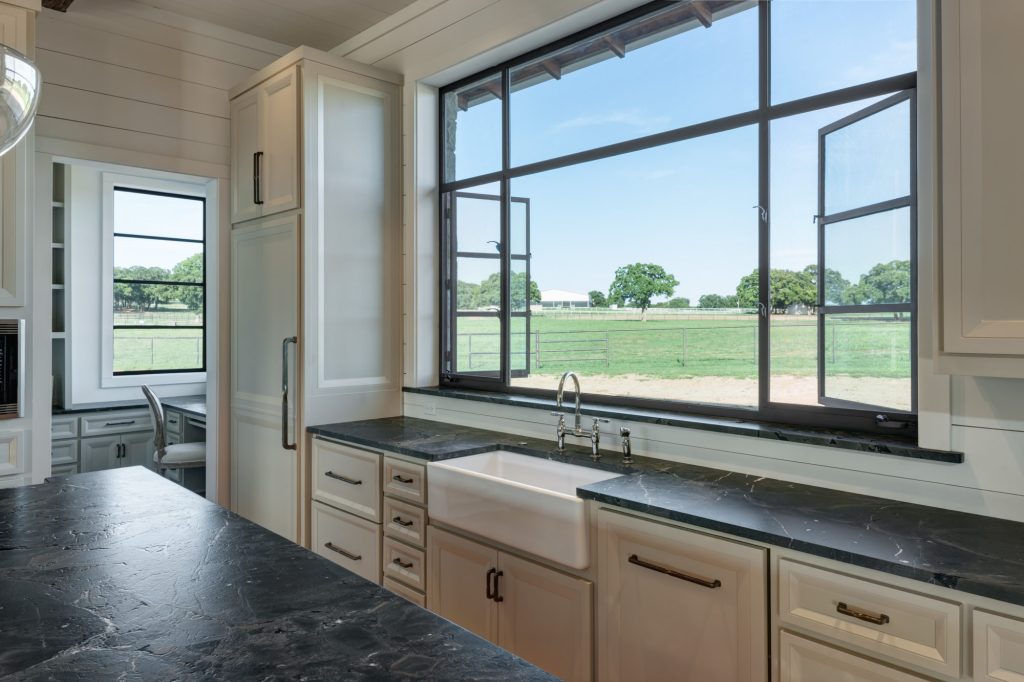
Double-Hung Windows
Featuring two sashes that slide vertically, double-hung windows offer timeless appeal and practical flexibility. Their space-saving design doesn’t intrude into either interior or exterior space, making them perfect for pairing with a serving ledge. You can choose to open just the top sash for ventilation while keeping the bottom closed for safety, or vice versa. This versatility makes them especially suited for traditional-style homes and those who appreciate familiar, easy operation.

Sliding Windows
Sliding windows, also called gliding windows, these feature panels that move horizontally along a track. Sliding windows provide wide, easy access without requiring any swinging space, making them excellent for wider openings and modern home designs. The generous opening allows for effortless passing of food and drinks, while their clean, low-profile appearance complements contemporary architecture. They’re particularly well-suited for creating seamless connections between indoor and outdoor living areas.
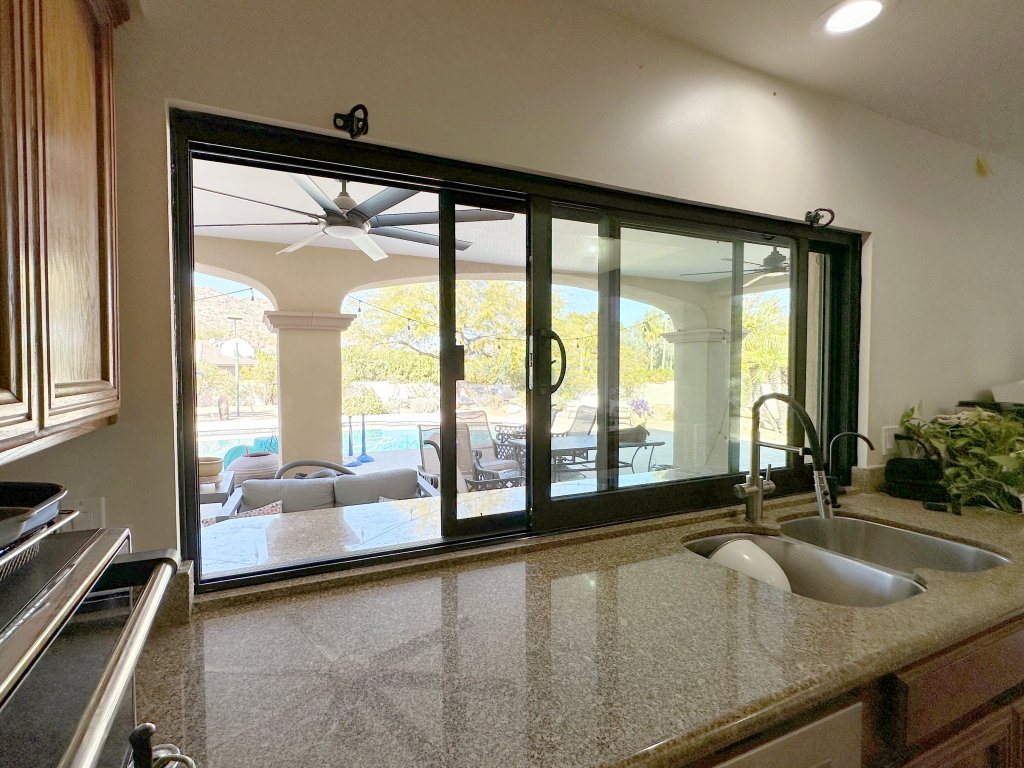
Awning Windows
Hinged at the top and opening outward from the bottom, awning windows create a protective canopy effect when open. Their clever design allows for ventilation even during light rain, making them exceptionally practical. The bottom-opening operation provides perfect access for passing items through while maintaining weather protection. Often used in groups or combination with other window types, they bring mid-century modern charm and all-weather functionality to any pass-through installation.
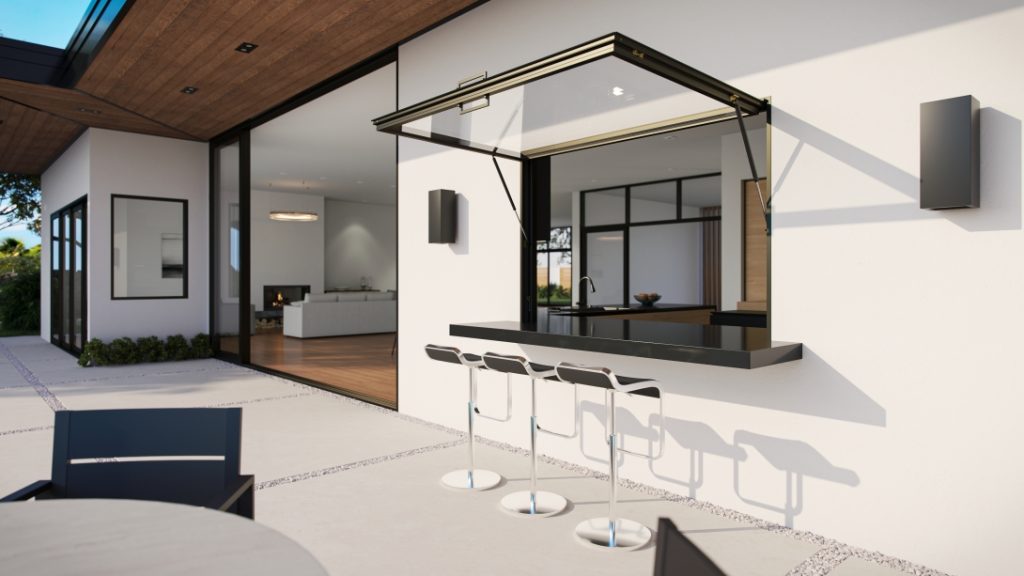
Folding Windows
For a truly transformative opening, folding windows (also called fold-up or accordion windows) offer an innovative and flexible solution. These multi-panel systems collapse seamlessly—either stacking to one side or folding upward—much like an accordion, creating a dramatic open-air pass-through. This design essentially turns an entire section of your wall into a vast, customizable opening, perfect for merging your kitchen or living area with a patio or deck.
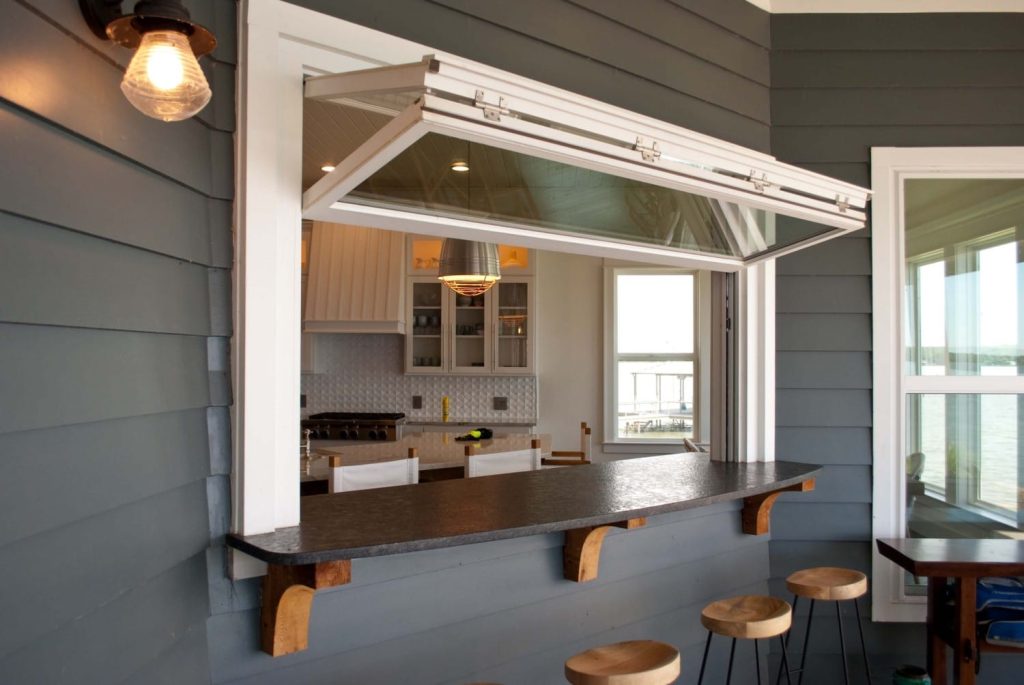
Do Pass Through Windows Have Screens?
Yes, many kitchen pass through windows can be equipped with screens, depending on the style and design. Screens are especially common for windows that open to outdoor areas, like patios or gardens, as they help keep insects and debris out while allowing fresh air to flow through.
For sliding or casement pass-through windows, screens can be added to either side of the window, or they can be designed to slide with the window itself. Folding passthrough windows, on the other hand, may also come with retractable or roll-up screens that can be conveniently stored when not in use.
If you’re looking for a pass-through window with a screen, it’s important to check the product specifications or consult with the manufacturer, as not all pass-through window designs come with built-in screens. However, for those who want to enjoy the breeze without the bugs, opting for a window with a screen is definitely a good choice.
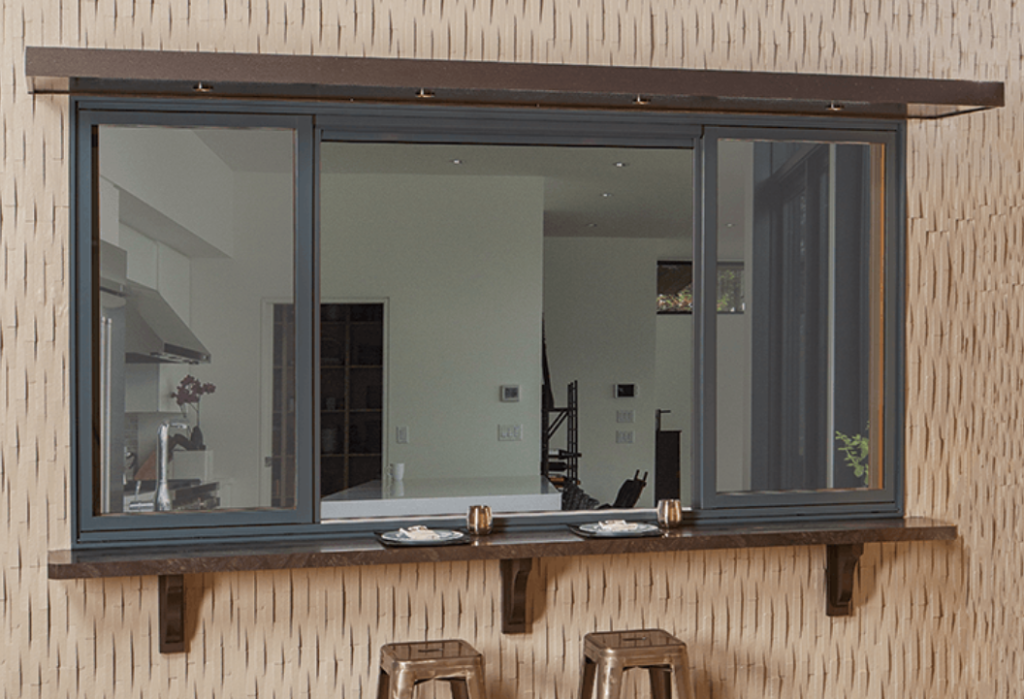
Where to Buy Passthrough Windows?
Pass through windows are available through most major window and door manufacturers, as well as home improvement retailers. Brands like Andersen and Pella provide ready-made solutions in popular styles such as sliding, folding, and casement designs. For homeowners or developers who want something tailored to their project, many suppliers also offer custom sizing, finishes, and energy-efficient glass options.
If you’re looking for more than just windows, PA Home can be a strong choice. As a wholehome customization manufacturer, PA Home not only offers windows and doors but also produces custom kitchen cabinets, wardrobes, interior doors, wall panels, and bathroom solutions. This means you can achieve a unified design and consistent quality across your entire home rather than sourcing from multiple vendors. With advanced production lines and years of export experience, PA Home combines design flexibility with reliable craftsmanship.
Whether you’re planning a home renovation or working on a large development project, a pass-through window can add convenience and style to your space. To explore tailored options and get a quote, you can reach out directly to PA Home for professional consultation and pricing.
FAQs about Pass Through Windows
Yes, many pass-through windows are designed with energy-efficient features, such as double-paned glass or low-E coatings, to help reduce heat transfer and improve insulation. This makes them a great choice for maintaining comfort in both hot and cold climates.
The cost to install a pass-through window typically ranges from $400 to $2,000, depending on the window style, materials, and installation complexity. Basic models with standard materials may cost around $400 to $800, while custom or premium designs can reach $1,500 or more. Installation usually adds an additional $200 to $500, depending on the complexity of the project.
Popular designs include sliding windows, which are space-saving and easy to operate, and folding windows, which open wide for a seamless connection between spaces. Casement pass-through windows, which open outward like a door, are also a classic option for more traditional homes.
Most modern pass-through windows are designed to be weatherproof, especially if you’re choosing energy-efficient glass and high-quality seals. However, if you’re installing the window in an outdoor area, it’s crucial to select a model that is specifically designed to withstand the elements, such as rain, wind, and humidity.
Yes, pass-through windows are relatively easy to clean. Most modern designs come with smooth surfaces and simple operating mechanisms. For sliding windows, regular cleaning of the tracks and glass is necessary. Folding windows may require a bit more maintenance due to their multiple panels, but with proper care, they can remain in good condition for years.


